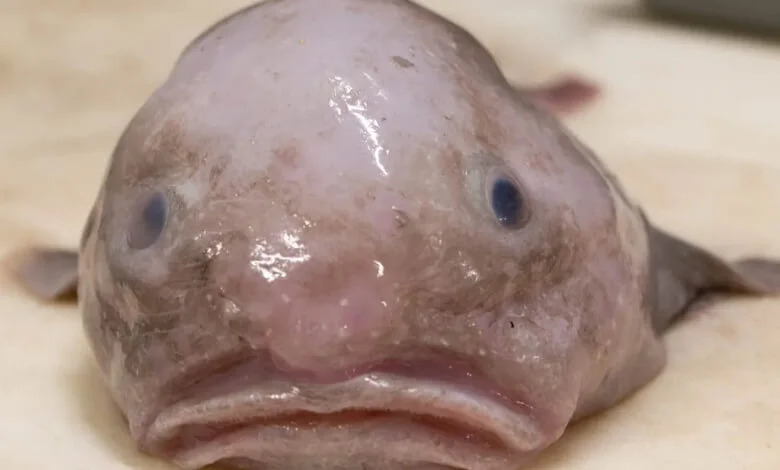
Unveiling the hidden culinary secret of the world’s ugliest fish: delve into the intriguing delicacies loved by the Blobfish!
Table of Contents
- Understanding the Blobfish
- Debunking the Myth: What Blobfish Don’t Eat
- Unraveling the Mystery: What Blobfish Actually Eat
- Adaptations for Survival
- The Impact of Diet on Blobfish Conservation
- The Blobfish in Popular Culture
- Conclusion
Have you ever wondered what the Blobfish eats? With its peculiar appearance, this deep-sea dweller has stirred up curiosity and intrigue among scientists and the public alike. Contrary to popular belief, the diet of the Blobfish is quite fascinating and goes beyond the stereotypes associated with its squishy, gelatinous appearance. So, let’s dive deep into the exquisite tastes and feeding habits of the Blobfish!
Understanding the Blobfish
Before we unravel the mysteries of their diet, let’s take a moment to appreciate the Blobfish as a species. The Blobfish, scientifically known as Psychrolutes marcidus, is found in the deep waters off the coast of Australia and Tasmania. This unique creature has gained its notoriety for its somewhat unattractive appearance, characterized by its droopy, gel-like body and a frowning expression.
Despite their unconventional looks, the Blobfish are a marvel of adaptation. Their gelatinous appearance is primarily due to their adaptation to the high-pressure environment of the deep sea. While they may not win any beauty contests, their physiology allows them to thrive in extreme conditions that many other organisms could not endure.
Debunking the Myth: What Blobfish Don’t Eat
There are plenty of misconceptions when it comes to Blobfish and their diet. Contrary to popular belief, they do not feast on human dreams or nightmares! Also, they are not bioluminescent, so they don’t rely on glowing organisms as a primary food source. It’s essential to dispel these myths and explore the true diet of the Blobfish.
Blobfish are not active predators like sharks or some other fish species. Their sluggish nature and lack of prominent teeth suggest they do not pursue swift prey. Blobfish are opportunistic feeders who depend on currents to bring food close to them. So, what exactly do they eat?
Unraveling the Mystery: What Blobfish Actually Eat
The Blobfish primarily rely on scavenging for their sustenance. They feed on a wide array of organic material that sinks towards the ocean floor, which includes small invertebrates, dead fish, sea squirts, and other marine detritus. Their lack of specialized feeding adaptations points to their role as generalist feeders.
Deep-sea environments are known for their scarcity of food resources. Blobfish have evolved to take advantage of this environment by utilizing their large mouths to consume whatever edible material comes their way. They have a unique physiological ability to absorb nutrients efficiently, even from low-energy food sources.
Adaptations for Survival
Blobfish have evolved specific physical adaptations to ensure their survival in the deep-sea environment. Their gelatinous and flabby body helps them float just above the ocean floor, allowing them to conserve energy. This adaptation is particularly useful in a habitat where food resources are highly unpredictable.
The Blobfish also possess a unique adaptation called “buoyancy adaptation.” Unlike other fish, their swim bladder is reduced, which enables them to maintain their position in the water column without much effort. By minimizing energy expenditure, the Blobfish can stay afloat and be ready to consume any food that comes their way.
The Impact of Diet on Blobfish Conservation
Understanding the Blobfish’s diet is crucial for its conservation. Like many marine species, Blobfish face numerous threats due to human activities and environmental changes. If their food sources decline or become contaminated, it could have devastating effects on their population.

Overfishing and habitat destruction are specific concerns for Blobfish, as they heavily rely on detritus and organic material sinking to the ocean floor. Changes in ocean currents or pollution can disrupt these food sources. Implementing sustainable fishing practices, protecting deep-sea habitats, and reducing pollution are important steps towards conserving the Blobfish population.
The Blobfish in Popular Culture
While not conventionally attractive, the Blobfish has captured the public’s attention and sparked curiosity. Unfortunately, its distinctive appearance often leads to misinformation and unrealistic portrayals in popular culture. From cartoons to memes, the Blobfish is frequently depicted as a hideous monster.
However, it is crucial to remember that the Blobfish plays a vital role in the deep-sea ecosystem. By accurately representing this species, popular culture can raise awareness about the fragility of our oceans and the importance of conserving all marine life, regardless of their appearance.
Conclusion
The Blobfish’s diet is anything but ordinary. As opportunistic scavengers, they embrace a wide range of food sources while adapting to the challenges of the deep sea. By understanding and appreciating the Blobfish’s unique feeding habits, we can contribute to their conservation and protect the delicate balance of our marine ecosystems. So, let’s show some love to the Blobfish and celebrate its resilience and adaptability!






